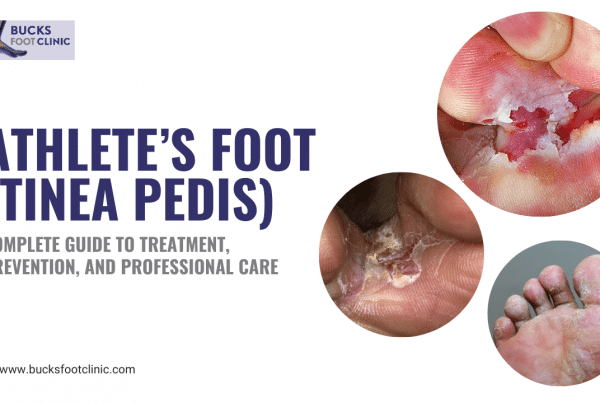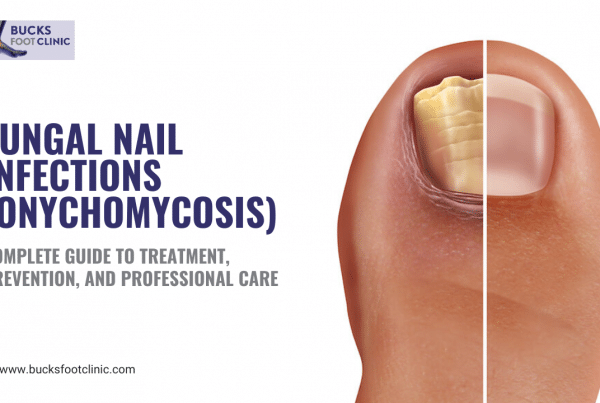Got a fungal nail infection / ingrown toenail infection that you just can’t seem to get rid of? Then nail surgery may just be right for you. The pain can be annoyingly unbearable, so why make it a recurring feeling when you can just get rid of it entirely? Nail surgery is the perfect fix to all your infection problems.
There are lots of questions surrounding nail surgery, however, and we’re here to clear them up for you. So, if you want to know more about what nail surgery is, who does nail surgery, how effective it is, and more, read on!
What Is Nail Surgery?
Lots of people ask the question, “What is nail surgery?”. Nail surgery is considered a minor procedure. It is usually conducted under local anesthetic, to help alleviate pain and infection in toenails.
During nail surgery, a podiatrist might remove one or two sections from your nail, on each side. In some forms of nail surgery, your podiatrist may have to remove your whole nail, depending on the extent of infection / injury.
Once the nail surgery is over, the podiatrist will use a form of treatment to prevent the affected nail from growing again.
Who Does Nail Surgery?
Now that you know what nail surgery is, you’re probably wondering who does nail surgery.
Nail surgery is done by certified professional Podiatrists. Never get nail surgery from anyone who is not professionally equipped to handle it.
What Happens During Nail Surgery?
Nail surgery is a simple procedure which can be done in your podiatrist’s office. Before starting, your podiatrist will numb the area around your affected nail. The feeling is very similar to having your gums numbed at the dentist. Although you won’t be knocked out for the surgery, you don’t have to worry about pain at all.
Once the area is nice and numb, your podiatrist will use tools specially designed for the job and remove the entire nail / the infected bit of nail.
If your case is leaning more on the severe side, they may have to destroy your affected nail’s matrix, to prevent the nail from re-growing in the future.
Post nail surgery, your podiatrist will apply an antibiotic cream and a bandage around the affected nail bed, which is the part of your toe under where the nail used to be. This cream will prevent bacterial infections from occurring.
The surgery is super simple and takes less than an hour normally.
Getting Ready For Nail Surgery
Before going in for surgery, your professional will most likely take a physical exam and discuss your medical history with you, like any other illnesses / surgeries you’ve undergone. They’ll also ask if you have:
- Latex / tape allergies
- Drug allergies
- Bleeding disorders
- Diabetes
- Medicines taken on a regular basis, even OTC pain relievers and supplements
Generally, on the day of the nail surgery, you can go on as usual. You can eat, shower, and take your daily medicines, unless your doctor specifically states otherwise.
Aftercare
After you’ve gone through nail surgery and the toe has been dressed, you have to keep the dressing dry and on for 2-3 days. After which, you’ll need to redress your toe.
Your podiatrist will give you written instructions on how to redress your toe properly. You’ll have to follow their instructions well. The average healing period after nail surgery is around 3-6 weeks. After your nail surgery, you can return to work in 24 hours. You can only go on with sporting activities once the toe is fully healed.
How Effective Is It?
Nail surgery generally is a permanent solution to your problem. Regrowth can occur occasionally, but this is in much less than 5% cases out of thousands.
Are There Alternatives to Nail Surgery?
There are a few common routine treatments that act as alternatives to nail surgery. They aren’t permanent solutions, however, and only help for immediate and short-term relief. A common treatment used is cutting the nail back, but the nail often regrows with the same issue.
Every patient is different and has a different pain-tolerance. This is why we aim to alleviate their pain as fast as possible, according to the treatment that suits them best. Though, when a patient comes in with a chronic infected nail, nail surgery is the only safe and viable option.
Conclusion
If you’re suffering from fungal nail infection or recurring ingrown toenails, and are looking for a permanent solution, nail surgery may just be your best bet! Book an appointment with Bucks Foot Clinic for a consultation to see if nail surgery is the right option for you, and we’ll give you the best podiatric treatment in town!
Please call us on 0800 107 3290 / 077 99 122 099 Or contact us now



